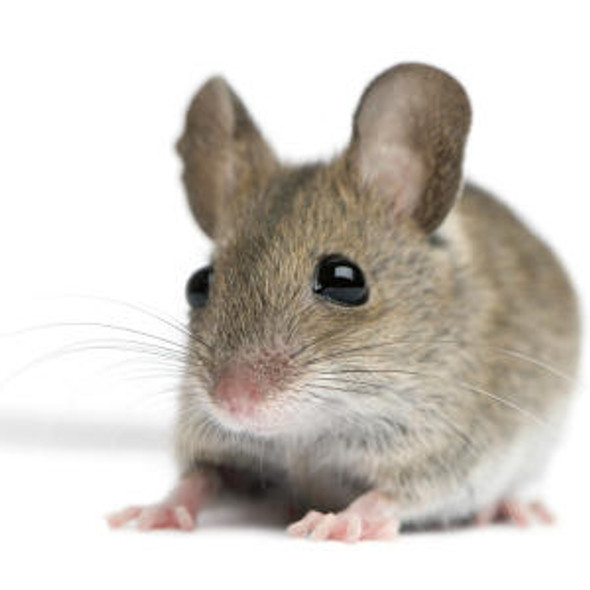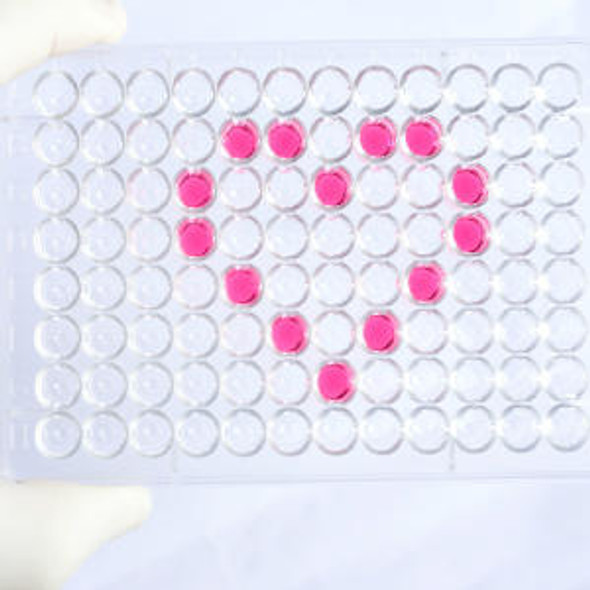Mouse CASP4 (Caspase 4) ELISA Kit (MOES00812)
- SKU:
- MOES00812
- Product Type:
- ELISA Kit
- Size:
- 96 Assays
- Uniprot:
- P70343
- Sensitivity:
- 0.94ng/mL
- Range:
- 1.56-100ng/mL
- ELISA Type:
- Sandwich
- Reactivity:
- Mouse
- Sample Type:
- Serum, plasma and other biological fluids
- Research Area:
- Immunology
Description
Mouse CASP4 (Caspase 4) ELISA Kit
The Mouse Casp4 (Caspase-4) ELISA Kit is a specialized assay kit designed for the precise measurement of Caspase-4 levels in mouse serum, plasma, and tissue homogenates. This kit offers exceptional sensitivity and specificity, ensuring accurate and reproducible results for a variety of research applications.Caspase-4 is a key enzyme involved in the inflammatory response and cell death pathways. It plays a critical role in regulating immune responses, inflammation, and apoptosis, making it a valuable biomarker for studying various diseases and conditions such as sepsis, autoimmune disorders, and neuroinflammation.
With its high-performance capabilities and extensive applications, the Mouse Casp4 ELISA Kit is an indispensable tool for researchers investigating the role of Caspase-4 in disease pathogenesis and exploring potential therapeutic interventions.
| Assay type: | Sandwich |
| Format: | 96T |
| Assay time: | 4.5h |
| Reactivity: | Mouse |
| Detection Method: | Colormetric |
| Detection Range: | 1.56-100 ng/mL |
| Sensitivity: | 0.94 ng/mL |
| Sample Volume Required Per Well: | 100µL |
| Sample Type: | Serum, plasma and other biological fluids |
| Specificity: | This kit recognizes Mouse CASP4 in samples. No significant cross-reactivity or interference between Mouse CASP4 and analogues was observed. |
This ELISA kit uses Sandwich-ELISA as the method. The micro ELISA plate provided in this kit has been pre-coated with an antibody specific to Mouse CASP4. Standards or samples are added to the appropriate micro ELISA plate wells and combined with the specific antibody. Then a biotinylated detection antibody specific for Mouse CASP4 and Avidin-Horseradish Peroxidase (HRP) conjugate are added to each micro plate well successively and incubated. Free components are washed away. The substrate solution is added to each well. Only those wells that contain Mouse CASP4, biotinylated detection antibody and Avidin-HRP conjugate will appear blue in color. The enzyme-substrate reaction is terminated by adding Stop Solution and the color turns yellow. The optical density (OD) is measured spectrophotometrically at a wavelength of 450 nm ± 2 nm. The OD value is proportional to the concentration of Mouse CASP4. The concentration of Mouse CASP4 in samples can be calculated by comparing the OD of the samples to the standard curve.
| UniProt Protein Function: | CASP4: Involved in the activation cascade of caspases responsible for apoptosis execution. Cleaves caspase-1. Heterotetramer that consists of two anti-parallel arranged heterodimers, each one formed by a small and a large subunit. Widely expressed, with highest levels in spleen and lung. Moderate expression in heart and liver, low expression in skeletal muscle, kidney and testis. Not found in the brain. Belongs to the peptidase C14A family. 2 isoforms of the human protein are produced by alternative splicing. |
| UniProt Protein Details: | Protein type:EC 3. 4. 22. 64; Apoptosis; Protease Cellular Component: cell soma; endoplasmic reticulum; membrane; mitochondrion; neuron projection; protein complex Molecular Function:cysteine-type endopeptidase activity; cysteine-type peptidase activity; hydrolase activity; peptidase activity Biological Process: actin filament organization; apoptosis; germ cell programmed cell death; positive regulation of interleukin-1 beta secretion; proteolysis; regulation of apoptosis; regulation of inflammatory response |
| NCBI Summary: | This gene encodes a member of the cysteine proteases that plays important roles in apoptosis, cell migration and the inflammatory response. The encoded protein mediates production of pro-inflammatory cytokines by macrophages upon bacterial infection. Mice lacking the encoded protein are resistant to endotoxic shock induced by lipopolysaccharide. A 5-bp deletion encompassing a splice acceptor junction resulting in alternate splicing and a shorter non-functional isoform in certain mouse strains has been described. Although its official nomenclature is "caspase 4, apoptosis-related cysteine peptidase", this gene and its encoded protein have historically been called caspase 11. This gene is present in a cluster of three caspase genes on chromosome 9. [provided by RefSeq, Apr 2015] |
| UniProt Code: | P70343 |
| NCBI GenInfo Identifier: | 341940314 |
| NCBI Gene ID: | 12363 |
| NCBI Accession: | P70343. 2 |
| UniProt Secondary Accession: | P70343,O08735, Q3TAF3, |
| UniProt Related Accession: | P70343 |
| Molecular Weight: | 42,742 Da |
| NCBI Full Name: | Caspase-4 |
| NCBI Synonym Full Names: | caspase 4, apoptosis-related cysteine peptidase |
| NCBI Official Symbol: | Casp4 |
| NCBI Official Synonym Symbols: | Caspl; ich-3; CASP-4; Casp11; CASP-11 |
| NCBI Protein Information: | caspase-4 |
| UniProt Protein Name: | Caspase-4 |
| UniProt Synonym Protein Names: | Caspase-11; CASP-11 |
| Protein Family: | Caspase |
| UniProt Gene Name: | Casp4 |
| UniProt Entry Name: | CASP4_MOUSE |
As the OD values of the standard curve may vary according to the conditions of the actual assay performance (e. g. operator, pipetting technique, washing technique or temperature effects), the operator should establish a standard curve for each test. Typical standard curve and data is provided below for reference only.
| Concentration (ng/mL) | O.D | Average | Corrected |
| 100 | 2.383 2.427 | 2.405 | 2.323 |
| 50 | 1.658 1.66 | 1.659 | 1.577 |
| 25 | 0.958 0.946 | 0.952 | 0.87 |
| 12.5 | 0.425 0.445 | 0.435 | 0.353 |
| 6.25 | 0.263 0.249 | 0.256 | 0.174 |
| 3.13 | 0.187 0.175 | 0.181 | 0.099 |
| 1.56 | 0.126 0.14 | 0.133 | 0.051 |
| 0 | 0.079 0.085 | 0.082 | -- |
Precision
Intra-assay Precision (Precision within an assay): 3 samples with low, mid range and high level Mouse CASP4 were tested 20 times on one plate, respectively.
Inter-assay Precision (Precision between assays): 3 samples with low, mid range and high level Mouse CASP4 were tested on 3 different plates, 20 replicates in each plate.
| Intra-assay Precision | Inter-assay Precision | |||||
| Sample | 1 | 2 | 3 | 1 | 2 | 3 |
| n | 20 | 20 | 20 | 20 | 20 | 20 |
| Mean (ng/mL) | 4.71 | 13.37 | 39.28 | 4.59 | 14.31 | 39.94 |
| Standard deviation | 0.28 | 0.77 | 1.36 | 0.23 | 0.71 | 1.36 |
| C V (%) | 5.94 | 5.76 | 3.46 | 5.01 | 4.96 | 3.41 |
Recovery
The recovery of Mouse CASP4 spiked at three different levels in samples throughout the range of the assay was evaluated in various matrices.
| Sample Type | Range (%) | Average Recovery (%) |
| Serum (n=5) | 86-101 | 93 |
| EDTA plasma (n=5) | 85-98 | 90 |
| Cell culture media (n=5) | 87-100 | 93 |
Linearity
Samples were spiked with high concentrations of Mouse CASP4 and diluted with Reference Standard & Sample Diluent to produce samples with values within the range of the assay.
| Serum (n=5) | EDTA plasma (n=5) | Cell culture media (n=5) | ||
| 1:2 | Range (%) | 97-108 | 93-107 | 89-105 |
| Average (%) | 103 | 101 | 97 | |
| 1:4 | Range (%) | 93-105 | 81-93 | 89-103 |
| Average (%) | 99 | 88 | 95 | |
| 1:8 | Range (%) | 93-105 | 84-99 | 81-96 |
| Average (%) | 99 | 90 | 88 | |
| 1:16 | Range (%) | 89-102 | 80-90 | 89-99 |
| Average (%) | 96 | 85 | 94 |
An unopened kit can be stored at 4°C for 1 month. If the kit is not used within 1 month, store the items separately according to the following conditions once the kit is received.
| Item | Specifications | Storage |
| Micro ELISA Plate(Dismountable) | 8 wells ×12 strips | -20°C, 6 months |
| Reference Standard | 2 vials | |
| Concentrated Biotinylated Detection Ab (100×) | 1 vial, 120 µL | |
| Concentrated HRP Conjugate (100×) | 1 vial, 120 µL | -20°C(shading light), 6 months |
| Reference Standard & Sample Diluent | 1 vial, 20 mL | 4°C, 6 months |
| Biotinylated Detection Ab Diluent | 1 vial, 14 mL | |
| HRP Conjugate Diluent | 1 vial, 14 mL | |
| Concentrated Wash Buffer (25×) | 1 vial, 30 mL | |
| Substrate Reagent | 1 vial, 10 mL | 4°C(shading light) |
| Stop Solution | 1 vial, 10 mL | 4°C |
| Plate Sealer | 5 pieces | |
| Product Description | 1 copy | |
| Certificate of Analysis | 1 copy |
- Set standard, test sample and control (zero) wells on the pre-coated plate and record theirpositions. It is recommended to measure each standard and sample in duplicate. Note: addall solutions to the bottom of the plate wells while avoiding contact with the well walls. Ensuresolutions do not foam when adding to the wells.
- Aliquot 100µl of standard solutions into the standard wells.
- Add 100µl of Sample / Standard dilution buffer into the control (zero) well.
- Add 100µl of properly diluted sample (serum, plasma, tissue homogenates and otherbiological fluids) into test sample wells.
- Cover the plate with the sealer provided in the kit and incubate for 90 min at 37°C.
- Aspirate the liquid from each well, do not wash. Immediately add 100µL of BiotinylatedDetection Ab working solution to each well. Cover the plate with a plate seal and gently mix. Incubate for 1 hour at 37°C.
- Aspirate or decant the solution from the plate and add 350µL of wash buffer to each welland incubate for 1-2 minutes at room temperature. Aspirate the solution from each well andclap the plate on absorbent filter paper to dry. Repeat this process 3 times. Note: a microplatewasher can be used in this step and other wash steps.
- Add 100µL of HRP Conjugate working solution to each well. Cover with a plate seal andincubate for 30 min at 37°C.
- Aspirate or decant the solution from each well. Repeat the wash process for five times asconducted in step 7.
- Add 90µL of Substrate Reagent to each well. Cover with a new plate seal and incubate forapproximately 15 min at 37°C. Protect the plate from light. Note: the reaction time can beshortened or extended according to the actual color change, but not by more than 30min.
- Add 50 µL of Stop Solution to each well. Note: Adding the stop solution should be done inthe same order as the substrate solution.
- Determine the optical density (OD value) of each well immediately with a microplate readerset at 450 nm.






